CBS News
Fukushima nuclear plant starts highly controversial wastewater release
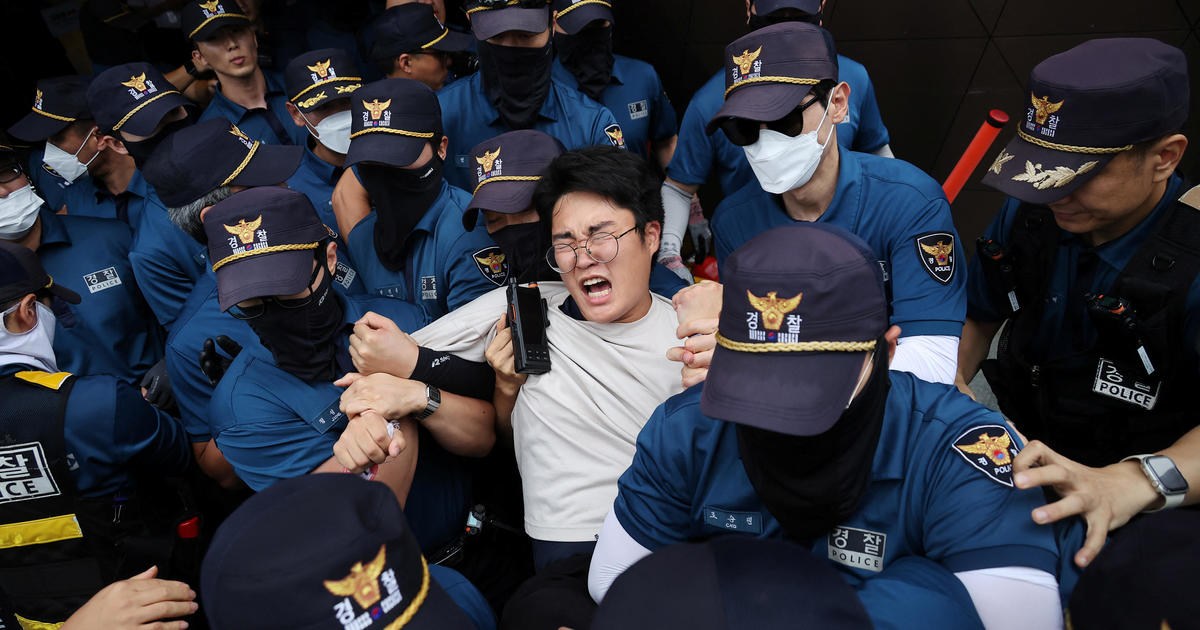
Okuma, Japan — The tsunami-wrecked Fukushima Daiichi nuclear power plant’s operator says it began releasing its first batch of treated radioactive water into the Pacific Ocean Thursday – a controversial step that prompted China to ban seafood from Japan.
In a live video from a control room at the plant, Tokyo Electric Power Company Holdings showed a staff member turn on a seawater pump with a click of a mouse, marking the beginning of the controversial project that’s expected to last for decades.
Eugene Hoshiko / AP
“Seawater Pump A activated,” the main operator said, confirming the release was underway. TEPCO later confirmed that the seawater pump was activated at 1:03 p.m. local time (12:03 a.m. EDT), three minutes after the final step began.
TEPCO said an additional wastewater release pump was activated 20 minutes after the first. Plant officials said everything was moving smoothly so far.
Japanese fishing groups have opposed the plan, fearing it will do further damage to the reputation of their seafood. Groups in China and South Korea have also raised concerns, making it a political and diplomatic issue.
South Korean police arrested 16 people Thursday for entering the building in Seoul where the Japanese embassy is located, the Reuters news agency reported. One of several banners hung by the group said, “The sea is not Japan’s trash bin,” according to Reuters.
North Korea also protested the move Thursday, Agence France-Presse reports. “Japan must immediately call off the dangerous discharge of nuclear contaminated water that seriously threatens the security and future of mankind,” its foreign ministry said in a statement carried by the official Korean Central News Agency.
KIM HONG-JI / REUTERS
In response to the release, Chinese customs authorities banned seafood from Japan, the authorities announced Thursday. The ban started immediately and will affect all imports of “aquatic products” including seafood, according to the notice. Authorities said they will “dynamically adjust relevant regulatory measures as appropriate to prevent the risks of nuclear-contaminated water discharge to the health and food safety of our country.”
Japanese Prime Minister Fumio Kishida said later Thursday that his government had demanded China “immediately eliminate” the ban, AFP reported. “We lodged a complaint through diplomatic channels to China,” Kishida told reporters.
There were also protests in Japan itself.
Norihiro Haruta / AP
But the Japanese government and TEPCO say the water must be released to make room for the plant’s decommissioning and to prevent accidental leaks. They say the treatment and dilution will make the wastewater safer than international standards and its environmental impact will be negligibly small.
Tony Hooker, director of the Center for Radiation Research, Education, Innovation at the University of Adelaide, said the water released from the Fukushima plant is safe. “It certainly is well below the World Health Organization drinking water guidelines,” he said. “It’s safe.”
“It’s a very political issue of disposing radiation into the sea,” he said. “I understand people’s concerns and that’s because we as scientists have not explained it in a very good way, and we need to do more education.”
Still, some scientists say the long-term impact of the low-dose radioactivity that remains in the water needs attention.
In a statement Thursday, International Atomic Energy Agency Director General Rafael Mariano Grossi said, “IAEA experts are there on the ground to serve as the eyes of the international community and ensure that the discharge is being carried out as planned consistent with IAEA safety standards.”
The United Nations nuclear watchdog also said it would launch a webpage to provide live data about the discharge and repeated its assurance that the IAEA would have an on-site presence for the duration of the release.
But initial readings showed the tritium concentration in the wastewater was well below the operational limit, the agency said, according to AFP.
“IAEA experts this week took samples from the first batch of diluted water prepared for discharge,” the agency said in a statement. “The IAEA’s independent on-site analysis confirmed that the tritium concentration in the diluted water that is being discharged is far below the operational limit.”
The water release began more than 12 years after the March 2011 nuclear meltdowns caused by a massive earthquake and tsunami. It marks a milestone for the plant’s battle with an ever-growing radioactive water stockpile that TEPCO and the government say has hampered the daunting task of removing fatally toxic melted debris from the reactors.
The pump activated Thursday afternoon sent the first batch of the diluted, treated water from a mixing pool to a secondary pool 10 minutes later. It then moves through a connected undersea tunnel to go six-tenths-of-a-mile off the coast. Officials said the water moves at a walking speed and will take about 30 minutes to exit from the tunnel.
The operator checked data and the progress on a set of four monitors that show the water volume, pump conditions and any alerts.
TEPCO executive Junichi Matsumoto said Thursday’s release was planned to start small in order to ensure safety.
The wastewater is collected and partly recycled as cooling water after treatment, with the rest stored in around 1,000 tanks, which are already filled to 98% of their 1.37-million-ton capacity. Those tanks, which cover much of the plant complex, must be freed up to build the new facilities needed for the decommissioning process, officials said.
Final preparation for the release began Tuesday when just one ton of treated water was sent from a tank for dilution with 1,200 tons of seawater, and the mixture was kept in the primary pool for two days for final sampling to ensure safety, Matsumoto said. A batch of 460 tons was to be sent to the mixing pool Thursday for the actual discharge.
Fukushima’s fisheries, tourism and other industries – which are still recovering from the disaster – worry the release could be the beginning of a new hardship.
Fukushima’s current fish catch is only about one-fifth its pre-disaster level, in part due to a decline in the fishing population. China has tightened radiation testing on Japanese products from Fukushima and nine other prefectures, halting exports at customs for weeks, Fisheries Agency officials said.
Prime Minister Fumio Kishida said the release is indispensable and couldn’t be postponed. He noted an experimental removal of a small amount of the melted debris from the No. 2 reactor is set for later this year, using a remote-controlled giant robotic arm.
In 2021, the Japanese government announced plans to release the treated water to the sea. Then, on Sunday, Kishida made a rushed visit to the plant before meeting with fisheries representatives and pledging to support their livelihoods until the release ends.
The hurried timeline raised skepticism that it was made to fit Kishida’s busy political schedule in September. But Economy and Industry Ministry officials said they wanted the release to start as early as possible and have good safety records ahead of the fall fishing season.
The March 2011 earthquake and tsunami destroyed the plant’s cooling systems, causing three reactors to melt. Highly contaminated cooling water applied to the damaged reactors has leaked continuously to building basements and mixed with groundwater.
TEPCO plans to release 31,200 tons of the treated water by the end of March 2024, which would empty only 10 tanks because of the contaminated production of wastewater at the plant, though the pace will pick up later.
CBS News
Satellite images show damage from Israeli attack at 2 secretive Iranian military bases

An Israeli attack on Iran damaged facilities at a secretive military base southeast of the Iranian capital that experts in the past have linked to Tehran’s onetime nuclear weapons program and at another base tied to its ballistic missile program, satellite photos analyzed Sunday by The Associated Press show.
Some of the buildings damaged sat in Iran’s Parchin military base, where the International Atomic Energy Agency suspects Iran in the past conducted tests of high explosives that could trigger a nuclear weapon. Iran long has insisted its nuclear program is peaceful, though the IAEA, Western intelligence agencies and others say Tehran had an active weapons program up until 2003.
The other damage could be seen at the nearby Khojir military base, which analysts believe hides an underground tunnel system and missile production sites.
Israel launched a series of strikes on Iranian military facilities in retaliation for the barrage of ballistic missiles the Islamic republic fired on Israel earlier this month.
Planet Labs PBC / AP
Iran’s military has not acknowledged damage at either Khojir or Parchin from Israel’s attack early Saturday, though it has said the assault killed four Iranian soldiers working in the country’s air defense systems.
Iran’s mission to the United Nations did not immediately respond to a request for comment, nor did the Israeli military.
However, Iranian Supreme Leader Ayatollah Ali Khamenei on Sunday told an audience that the Israeli attack “should not be exaggerated nor downplayed,” while stopping short of calling for an immediate retaliatory strike. Israeli Prime Minister Benjamin Netanyahu said Sunday that the strikes “severely harmed” Iran and achieved all of Israel’s goals.
“The air force struck throughout Iran. We severely harmed Iran’s defense capabilities and its ability to produce missiles that are aimed toward us,” Netanyahu said in his first public comments on the strikes.
It remains unclear how many sites in total were targeted in the Israeli attack. There have been no images of damage so far released by Iran’s military.
Planet Labs PBC / AP
Iranian officials have identified affected areas as being in Ilam, Khuzestan and Tehran provinces. Burned fields could be seen in satellite images from Planet Labs PBC around Iran’s Tange Bijar natural gas production site in Ilam province on Saturday, though it wasn’t immediately clear if it was related to the attack. Ilam province sits on the Iran-Iraq border in western Iran.
The most telling damage could be seen in Planet Labs images of Parchin, some 40 kilometers (25 miles) southeast of downtown Tehran near the Mamalu Dam. There, one structure appeared to be totally destroyed while others looked damaged in the attack.
At Khojir, some 20 kilometers (12 miles) away from downtown Tehran, damage could be seen on at least two structures in satellite images.
Analysts including Decker Eveleth at the Virginia-based think tank CNA, Joe Truzman at the Washington-based Foundation for Defense of Democracies and former United Nations weapon inspector David Albright, as well as other open-source experts, first identified the damage to the bases. The locations of the two bases correspond to videos obtained by the AP showing Iranian air defense systems firing in the vicinity early Saturday.
At Parchin, Albright’s Institute for Science and International Security identified the destroyed building against a mountainside as “Taleghan 2.” It said an archive of Iranian nuclear data earlier seized by Israel identified the building as housing “a smaller, elongated high explosive chamber and a flash X-ray system to examine small-scale high explosive tests.”
“Such tests may have included high explosives compressing a core of natural uranium, simulating the initiation of a nuclear explosive,” a 2018 report by the institute says.
Planet Labs PBC / AP
In a message posted to the social platform X early Sunday, the institute added: “It is not certain whether Iran used uranium at ‘Taleghan 2,’ but it is possible it studied the compression of natural uranium hemispheres, which would explain its hasty and secretive renovation efforts following the IAEA’s request to access Parchin in 2011.”
It’s unclear what, if any, equipment would have been inside of the “Taleghan 2” building early Saturday. There were no Israeli strikes on Iran’s oil industry, nor its nuclear enrichment sites or its nuclear power plant at Bushehr during the assault.
Rafael Mariano Grossi, who leads the IAEA, confirmed that on X, saying “Iran’s nuclear facilities have not been impacted.”
“Inspectors are safe and continue their vital work,” he added. “I call for prudence and restraint from actions that could jeopardize the safety & security of nuclear & other radioactive materials.”
Other buildings destroyed at Khojir and Parchin likely included a warehouse and other buildings where Iran used industrial mixers to create the solid fuel needed for its extensive ballistic missile arsenal, Eveleth said.
In a statement issued immediately after the attack Saturday, the Israeli military said it targeted “missile manufacturing facilities used to produce the missiles that Iran fired at the state of Israel over the last year.”
Destroying such sites could greatly disrupt Iran’s ability to manufacture new ballistic missiles to replenish its arsenal after the two attacks on Israel. Iran’s paramilitary Revolutionary Guard, which oversees the country’s ballistic missile program, has been silent since Saturday’s attack.
Iran’s overall ballistic missile arsenal, which includes shorter-range missiles unable to reach Israel, was estimated to be “over 3,000” by Gen. Kenneth McKenzie, then-commander of the U.S. military’s Central Command, in testimony to the U.S. Senate in 2022. In the time since, Iran has fired hundreds of missiles in a series of attacks.
There have been no videos or photos posted to social media of missile parts or damage in civilian neighborhoods following the recent attack – suggesting that the Israeli strikes were far more accurate than Iran’s ballistic missile barrages targeting Israel in April and October. Israel relied on aircraft-fired missiles during its attack.
However, one factory appeared to have been hit in Shamsabad Industrial City, just south of Tehran near Imam Khomeini International Airport, the country’s main gateway to the outside world. Online videos of the damaged building corresponded to an address for a firm known as TIECO, which advertises itself as building advanced machinery used in Iran’s oil and gas industry.
Officials at TIECO requested the AP write the company a letter before responding to questions. The firm did not immediately reply to a letter sent to it.
CBS News
Here Comes the Sun: Will Ferrell, Harper Steele and more

Watch CBS News
Be the first to know
Get browser notifications for breaking news, live events, and exclusive reporting.
CBS News
The Strange Shooting of Alex Pennig

Watch CBS News
Be the first to know
Get browser notifications for breaking news, live events, and exclusive reporting.


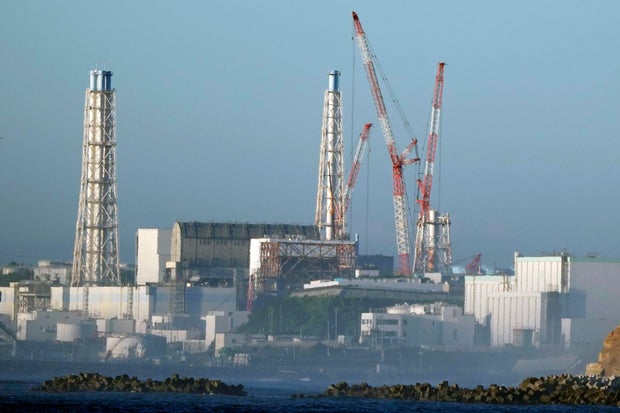

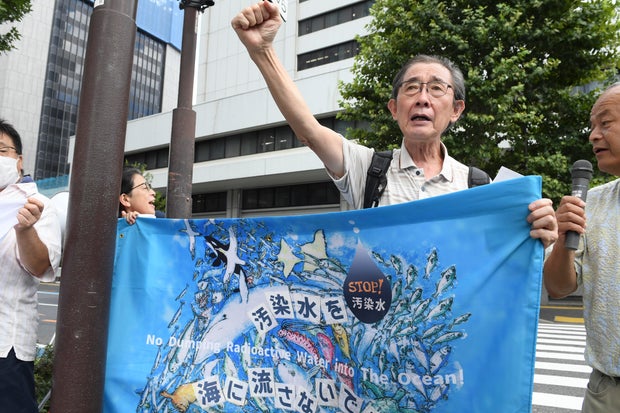


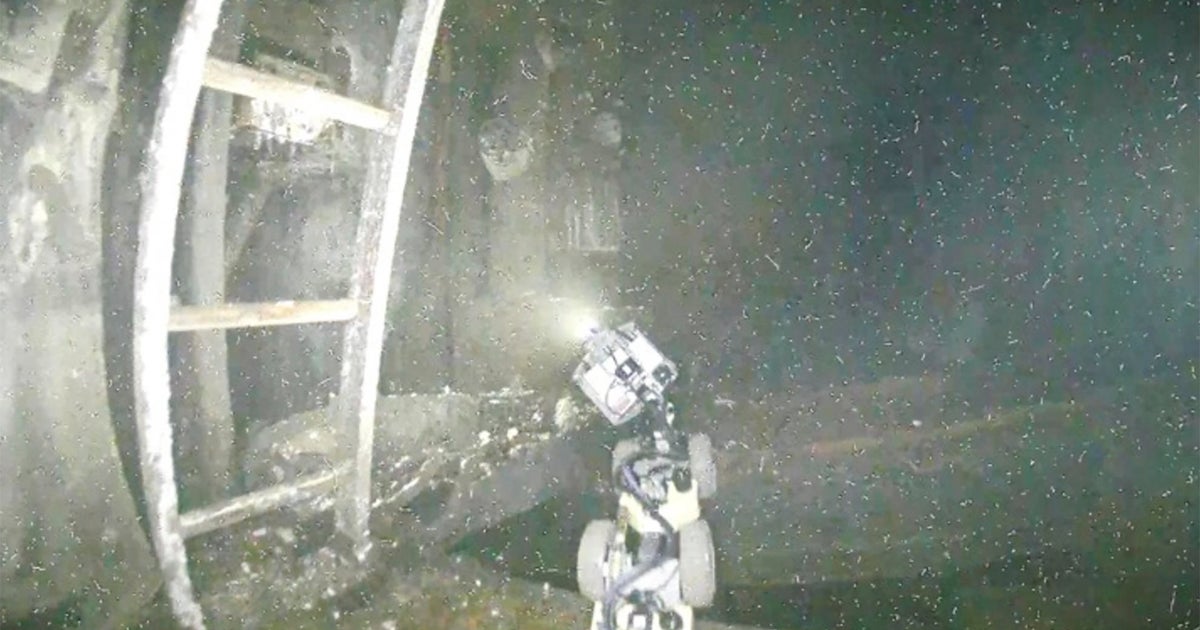
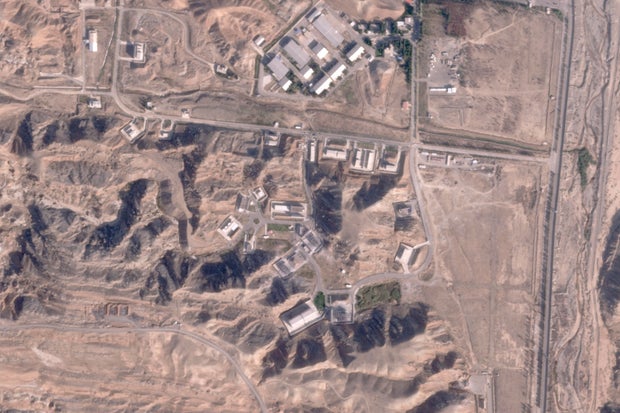
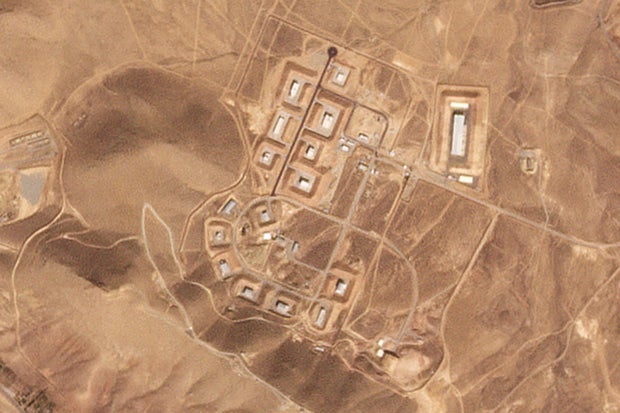

GIPHY App Key not set. Please check settings